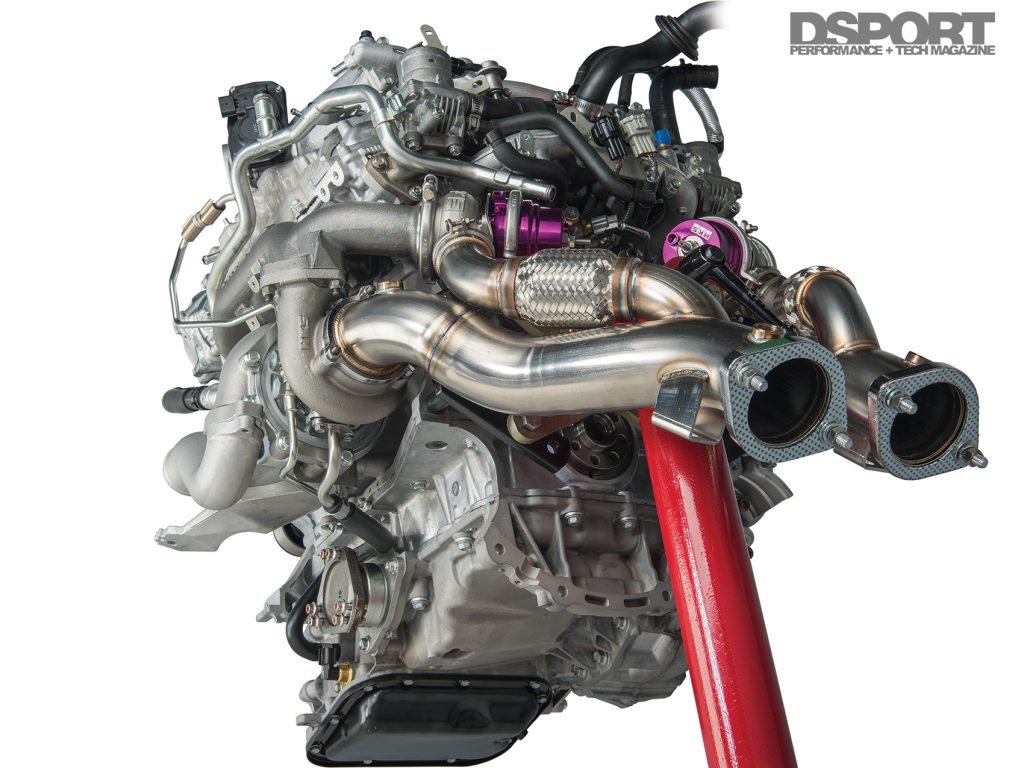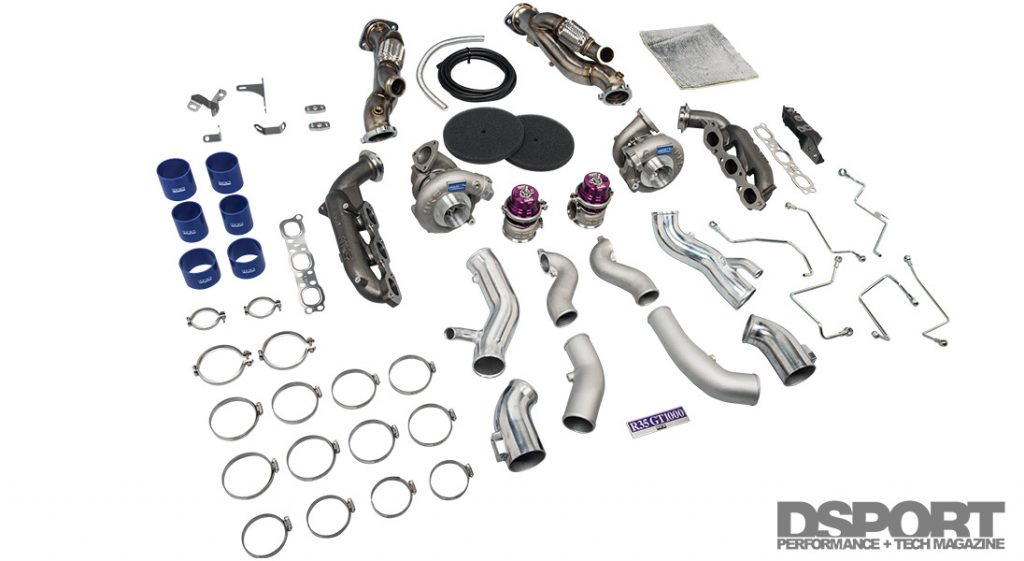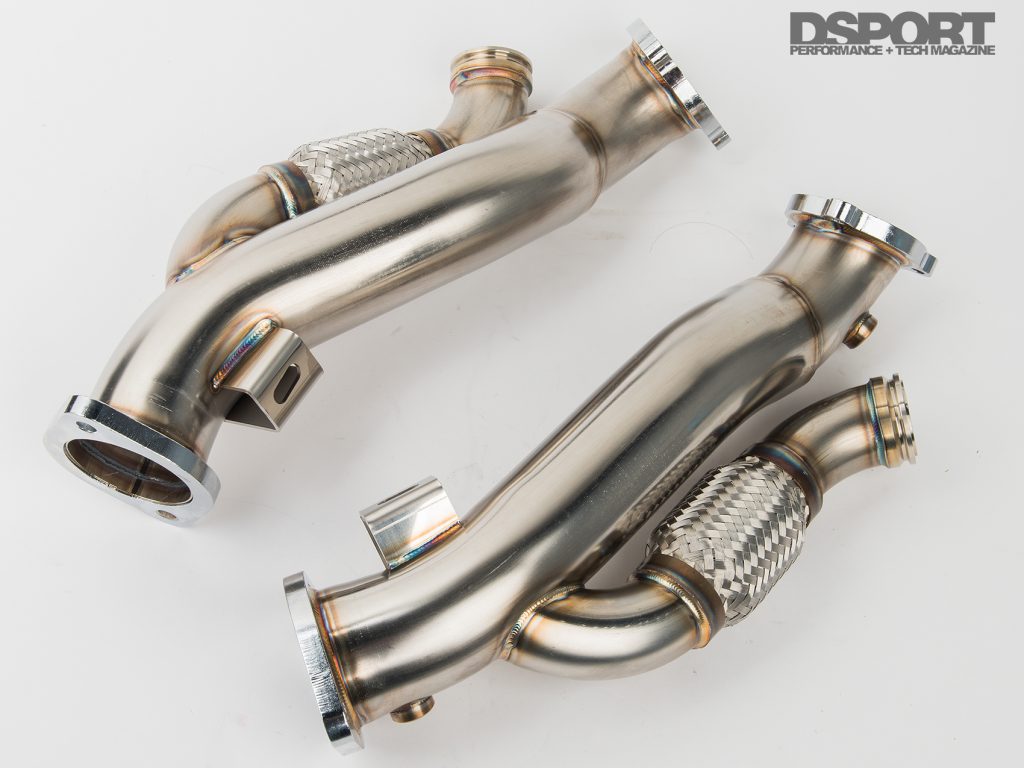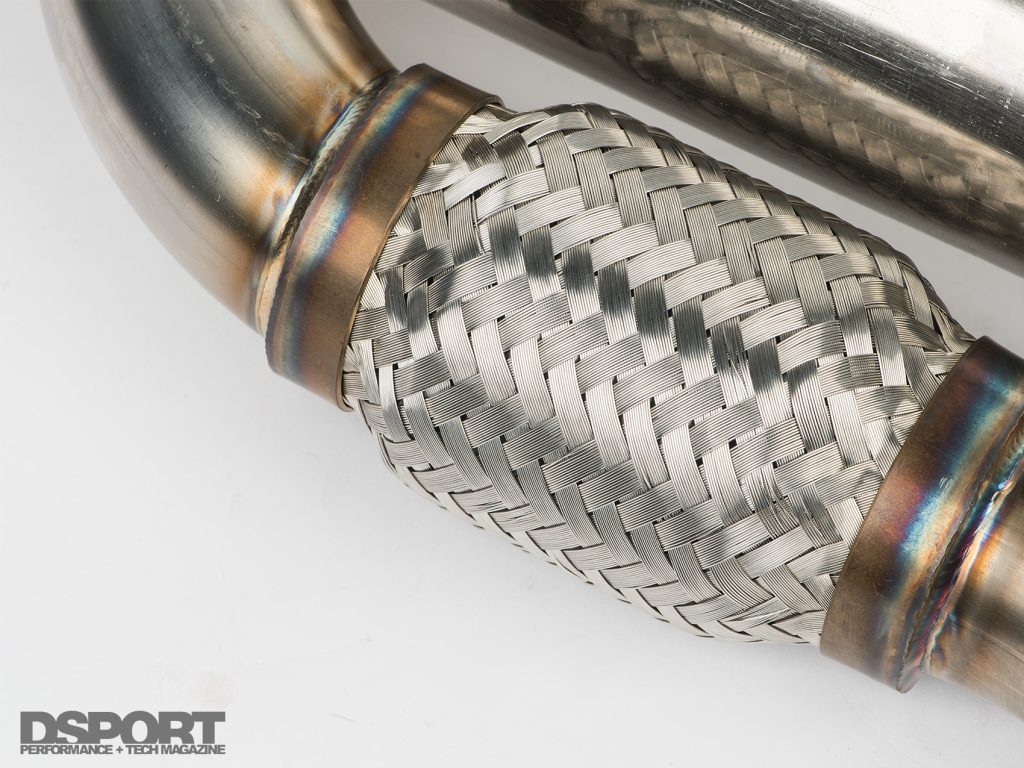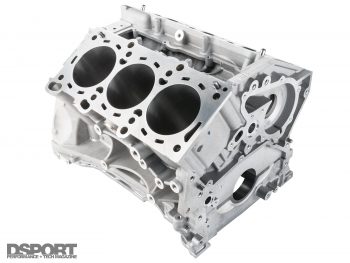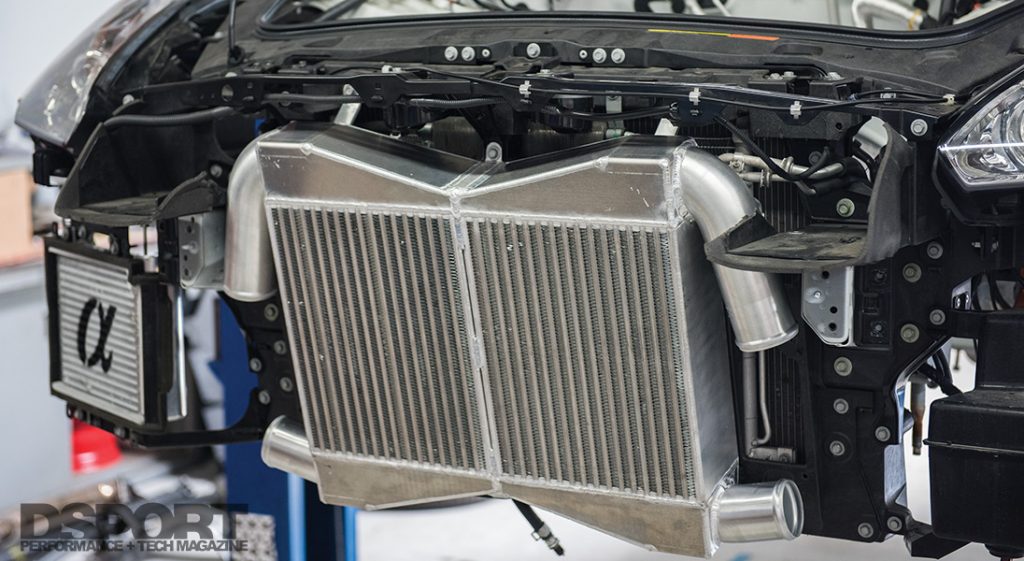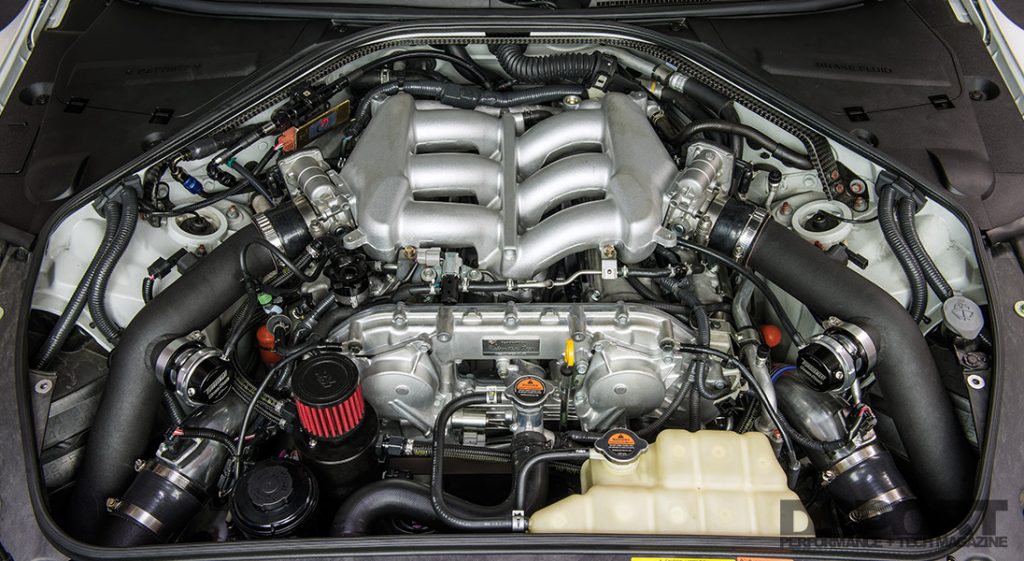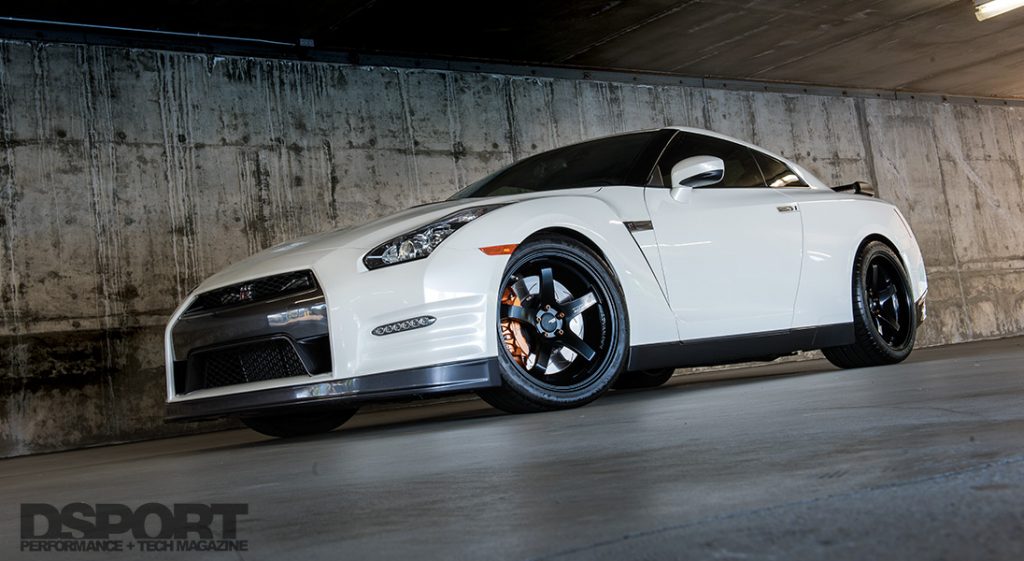Considering what tuners across the world have accomplished, the Nissan R35 GT-R may be the greatest mass-production sports car of all time. In stock form, you would need to spend double to find a competitor that could go toe to toe. With the right mix of bolt-on performance parts and a proper tune, 150 or more additional horsepower can be brought online at a price that would fit in every R35 owner’s budget. At the 600-650whp level, the factory turbochargers, engine and transmission are all at the limit in terms of power potential and power handling. For more power, it’s not a step that needs to be taken. It’s a giant leap in terms of the budget as the engine, transmission, turbocharger and fuel system must all be upgraded. Ultimately, it is the selection of the turbocharger system that determines the personality and capabilities of a beyond-full-bolt-on R35 GT-R. This month, we had the opportunity to install, tune and evaluate the HKS GT1000 FULL TURBINE KIT on an R35 GT-R fitted with a Club DSPORT Reference series VR38DETT engine.
By Michael Ferrara // Photos by Joe Singleton
DSPORT Issue #186
Re-Introducing HKS
While long-time import performance enthusiasts may not be able to fathom that the newest generation is unfamiliar with the history and heritage of HKS, the reality is that a six-year absence of an HKS USA did have an effect. Today, there are a lot of new enthusiasts to the market with no knowledge of this three-letter entity. Since HKS is back on US soil (Arizona), it seems the right time to educate the newbies. A little over 20 years ago, HKS was about the only game in town with a full lineup of tuning parts for Japanese performance vehicles. Electronics like the turbo-timer, electronic boost controller, F-CON (fuel controller computer) and VPC (speed-density conversion computer) joined hard parts like stroker kits, pistons and camshafts in the HKS lineup. In addition to exhaust systems, both “sport” (upgraded turbo for stock manifold) and “full” turbo kits (turbo with upgraded manifold) were available for the performance cars of that era (DSMs, Supra turbos, MR2s, RX7s and 300ZXs). The HKS catalog with its staged levels of performance served as the ultimate reference. In fact, enthusiasts would refer to other vehicles in terms of the HKS stages (i.e. that Stage-3 MR-2 got smoked by that Stage-5 Supra). After introducing the States to the true performance potential of Japanese sports cars, HKS continued to deliver some of the best engineered and highest quality parts while building record-setting demo cars that would obliterate the competition. Unfortunately, the world economic recession of 2008 was tough on the performance automotive aftermarket. HKS left the States to explore yellower rivers in a new market (China). Fortunately, they are back!
HKS GT1000 Philosophy
While there are some R35 turbo system upgrades that focus on stuffing the largest turbos possible between the frame rails (or may require the cutting of the frame rails), HKS engineers set out to engineer a system that would sport OEM fitment, reliability and durability while delivering exceptional response and performance for off-road competition use. To accomplish this goal, the implementation of turbochargers with a left and right symmetry was a must. By using turbochargers with this feature, the exhaust manifolds and charge plumbing could be designed to have a true symmetrical layout. As a result, both the left and right bank of the V6 engine would have identical flow paths. HKS also wanted to offer turbocharger options that provided exceptional matches for the VR38DETT engine and the popular stroker versions of the engine. The first HKS GT FULL TURBINE KIT for the R35 was the GT800 system featuring the GT II 7460 turbo. The GT1000 system followed this up with a larger GT II 7867 turbo. A GT900 and GT1000+ system based on GTII 7467 and GT II 8267 turbos was recently added to the lineup. All four turbocharger options rely upon a pair of HKS GT II 50mm wastegates to control boost.
The GT1000 FULL TURBINE system is pretty complete. About the only item that needs to be addressed is the intake pipes to the air flow meter housings that are included.
In addition to the turbochargers, exhaust manifolds and wastegates, the HKS GT FULL TURBINE KITS for the R35 also include TIG-welded stainless-steel downpipes with integrated wastegate dumps. By routing the wastegate flow back into the exhaust system instead of venting to atmosphere, the likelihood of picking up false knock readings when the wastegates open is diminished. The kits also include the mandrel-bent aluminum suction side plumbing up to and including the MAF housings along with the cast-aluminum charge pipes up to the front of the engine. A special motor mount bracket that gains some clearance for one side of the engine is also included along with oil and water hard lines. Teaming this system with some filter intakes and a capable intercooler system gets it done. Considering that an entire GT FULL TURBINE system for the R35 can be had for under $12,000, it’s reasonably priced too.
Attention to detail can be found throughout the system. Here, expansion bellows are used to accommodate the growth of the downpipes with temperature. Without these in place, the pipes might eventually crack.
GT800/900/1000/1000+ Turbos
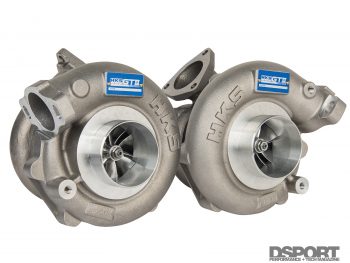 The original GT800 system (GT II 7460 turbos, p/n 11003-AN011) is the only offering to feature a smaller turbine wheel and turbine housing similar in size to a GT30 turbine wheel. The GT II 7460 turbocharger uses a 74mm family of compressor wheel with a 52mm inducer. This turbocharger has the flow potential to deliver over 800 horsepower when running about 23-24psi of boost pressure with a proper tune. Today, the GT800 system has been superseded by the recently-released GT900 system.
The original GT800 system (GT II 7460 turbos, p/n 11003-AN011) is the only offering to feature a smaller turbine wheel and turbine housing similar in size to a GT30 turbine wheel. The GT II 7460 turbocharger uses a 74mm family of compressor wheel with a 52mm inducer. This turbocharger has the flow potential to deliver over 800 horsepower when running about 23-24psi of boost pressure with a proper tune. Today, the GT800 system has been superseded by the recently-released GT900 system.
The new GT900 system uses the GT II 7467 turbochargers. These turbochargers are identical on the compressor section to the GT800 turbochargers but feature the larger turbine side that’s also used on the GT1000 and GT1000+ turbochargers. The larger turbine section, roughly equivalent in flow to a GT35, lowers exhaust back pressures for an additional 100 horsepower. While larger turbine sections can sometimes reduce boost response, that’s not the case on this application. Boost response is not affected, as the GT II 7467 is simply a better match for the VR38. The turbochargers used on both the GT1000 and GT1000+ also use this same turbine section with the differences being found just on the compressor side.
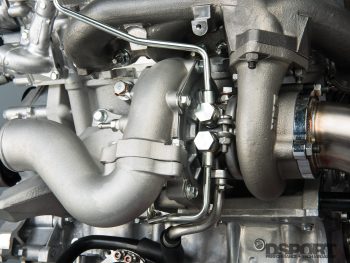 The GT1000 system was HKS’s original followup to the GT800 release. The GT1000 system uses GT II 7867 turbos. These turbos feature a 78mm family compressor wheel with a 62mm inducer. Originally, HKS intended this turbo option to be used on a 4.1-to-4.3-liter. In fact, if the GT1000 system is teamed with a 3.8-liter VR38 that is using factory camshafts, it’s easy to encounter compressor surge if the boost curve is not properly dialed. However, if a 3.8-liter is well built with big-valve heads and aftermarket camshafts (like the Club DSPORT Reference series engine used in this evaluation), compressor surge is much less likely to occur. HKS rates the system at over 1,000 horsepower when boost is in the 29-30psi range on gasoline. For those seeking more, HKS recently released its GT1000+ system.
The GT1000 system was HKS’s original followup to the GT800 release. The GT1000 system uses GT II 7867 turbos. These turbos feature a 78mm family compressor wheel with a 62mm inducer. Originally, HKS intended this turbo option to be used on a 4.1-to-4.3-liter. In fact, if the GT1000 system is teamed with a 3.8-liter VR38 that is using factory camshafts, it’s easy to encounter compressor surge if the boost curve is not properly dialed. However, if a 3.8-liter is well built with big-valve heads and aftermarket camshafts (like the Club DSPORT Reference series engine used in this evaluation), compressor surge is much less likely to occur. HKS rates the system at over 1,000 horsepower when boost is in the 29-30psi range on gasoline. For those seeking more, HKS recently released its GT1000+ system.
The GT1000+ system uses the GT II 8267 turbocharger. These turbos feature an 82mm family of compressor wheel with a 64mm inducer. This larger compressor wheel allows for an additional 150 horsepower to be realized. The larger compressor wheel also slows down the boost response a bit so that compressor surge is less likely. Ideally, HKS recommends the GT1000+ system be used on increased displacement engines. However, if a 3.8-liter VR38 engine is built to reliably operate at up to an extended rev limit (8,200RPM), this system can also be used with satisfactory results.
HKS Recommended Upgrades for GT Turbo Packages
- Forged Pistons
- Connecting Rods
- Fuel Injectors
- Fuel Supply System
- ECU Upgrade/Calibration
- Spark Plugs
- Intercooler
- Blow Off Valves
- Exhaust System
- Air Filter System
- Camshaft Upgrade
- Stroker Upgrade (GT1000+ Only)
- Surge Tank (GT1000+ Only)
Best Match
To team with a Club DSPORT Reference VR38 engine, our best match would be either the GT1000 or the GT1000+ system. Since the owner of the vehicle wanted the broadest possible torque curve with 1000+whp as the target, we opted for the GT1000 system. HKS sets the GTII 50mm gates from the factory to deliver a minimum boost pressure in the 13-14.5psi range. The gates feature a preload adjuster that can raise this minimum boost pressure on applications using fuels that are suited for higher boost operation. Since this R35 planned to compete on various ethanol blends, we employed a flex-fuel sensor and dialed in two additional turns into the wastegate preload. This took the base boost pressure to about 15psi. If E85 is going to be used exclusively, more preload and a higher base pressure can be set or a stiffer spring can be installed. However, too much preload may limit valve travel and boost creep can occur. The likelihood of compressor surge when used on 3.8-liter engines also increases, so pay close attention to these changes. Ideally, the most preload/spring pressure on the external gate that can be used to still provide adequate boost control is best.
Going beyond 600whp on a VR38 requires upgraded rods and pistons at a minimum. We did the maximum and fitted this R35 with a Club DSPORT Reference-Series VR38 for the testing. Thanks to precision machining, assembly and an engineered combination of components, more power, more efficiency and more durability are the result.
Supporting Cast
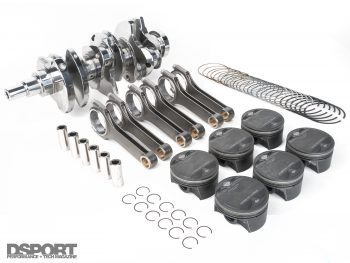 This build utilized a Club DSPORT VR38 Reference Series complete engine assembly. This engine uses a hyperfinished, factory Nissan crankshaft, Club DSPORT-spec rods by Carrillo and Club DSPORT-spec E85-optimized pistons made by Mahle. CNC line boring and decking is done to the block along with profilometer-matched, plateau diamond honing of the cylinders with a special Club DSPORT torque plate in place. The rotating assembly is three-stage balanced to less than 0.25 grams. The heads for the Club DSPORT Reference VR38 feature high-boost modifications, pocket porting, oversized valves and full-radius valve job with a Club DSPORT “hot-plate” on the Newen EPOC machine. The end result is a VR38 engine optimized for performance, efficiency, durability and smoothness with a power handling capability in excess of 1,600whp.
This build utilized a Club DSPORT VR38 Reference Series complete engine assembly. This engine uses a hyperfinished, factory Nissan crankshaft, Club DSPORT-spec rods by Carrillo and Club DSPORT-spec E85-optimized pistons made by Mahle. CNC line boring and decking is done to the block along with profilometer-matched, plateau diamond honing of the cylinders with a special Club DSPORT torque plate in place. The rotating assembly is three-stage balanced to less than 0.25 grams. The heads for the Club DSPORT Reference VR38 feature high-boost modifications, pocket porting, oversized valves and full-radius valve job with a Club DSPORT “hot-plate” on the Newen EPOC machine. The end result is a VR38 engine optimized for performance, efficiency, durability and smoothness with a power handling capability in excess of 1,600whp.
Upgraded turbos that can deliver nearly double the airflow of the factory units require an intercooler system that’s up to the task. We opted for the Buschur Racing GT-R Race FMIC kit as it has proven to deliver exceptional performance in similar builds in this power range. With a retail price just under $3,000, it’s hard to beat. The system not only includes a massive 22x14x4.5-inch bar-and-plate core, it also includes mandrel-bent 6061-aluminum 70mm (2.75”) hard pipes. We opted to use Turbosmart blow-off valves with the system and they have delivered exceptional fit and function.
Buschur Racing was also called upon to ready the transmission for the rigors of 1,000+whp and 8-second, ¼-mile passes. We opted for the BR140T package. With the BR140T package, Buschur Racing upgrades the first gear and mainshaft to a high-strength alloy version from Albins Gear. The clutch system is also upgraded to an 18-plate system. Blueprinting of the oil pump, and a stainless-steel Dodson filter are also included in the package. Cost for the upgrade runs about $8,500.
One of the most critical systems for a 1kwhp R35 GT-R is the fuel system. While there are many twin pump options that can handle the fuel demands on gasoline, the demands when running E85 can be beyond or at the limit of many of these systems. Conventional brushed motor, gear-type pumps often have extremely high current electrical demands too. DSPORT has had great success in using brushless, twin-screw pumps on both its R33 and R34 GT-R builds. Fortunately, AMS offers both a single and twin brushless fuel pump system for the R35 dubbed the Omega brushless. We’ve had the opportunity to install and run both the single and twin versions and we would recommend them to anyone with a big-power R35. As a future revision for these pumps, we’d love to see the inclusion of check valves on the pressure side to allow the pumps to be staged in their operation.
It’s not too in your face with the HKS GT1000 kit and Buschur Racing Race FMIC installed. It could easily be mistaken for a factory turbo setup until you hit the throttle and unleash 1,000+whp.
With the pumps up to the task, we upgraded to T1 Race Development fuel rails and Fuel Injector Clinic (FIC) 1650cc injectors. The 1650cc injectors feature stainless-steel internals making them compatible with any of the additives found in racing gasolines or alcohol-blended fuels. A set of plug and play adapters eliminates the need to solder on new injector connectors. These injectors were put under the control of a COBB Access Port. So that the ECU would know the actual boost levels, the MAP sensors were upgraded to OMNI 4-bar units. All of the engine and transmission calibration of the ECU was performed remotely by David Buschur of Calibrated ECU (and Buschur Racing).
The Install
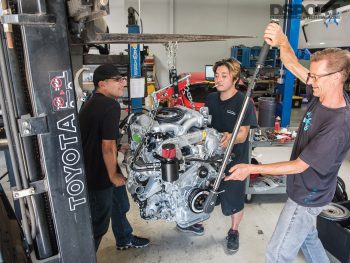 The attention to detail present in the HKS GT1000 FULL TURBINE kit could be seen in the exceptional fitment of the system. The factory heat shields require just a slight amount of trimming and massaging to fit into place. New water and oil lines take care of the plumbing to the turbo center sections. About the only challenge with the system is getting the compressor outlet piping to line up to the intercooler charge pipes. This is about the only area that you find slotted holes that allow for the fitment adjustments necessary to guarantee that the system lines up with any brand of intercooler being teamed with the system. Just because the system looked so good when installed on the engine, we probably did waste a few hours just gazing before it was installed.
The attention to detail present in the HKS GT1000 FULL TURBINE kit could be seen in the exceptional fitment of the system. The factory heat shields require just a slight amount of trimming and massaging to fit into place. New water and oil lines take care of the plumbing to the turbo center sections. About the only challenge with the system is getting the compressor outlet piping to line up to the intercooler charge pipes. This is about the only area that you find slotted holes that allow for the fitment adjustments necessary to guarantee that the system lines up with any brand of intercooler being teamed with the system. Just because the system looked so good when installed on the engine, we probably did waste a few hours just gazing before it was installed.
The Dyno
Kenny Tran of Jotech Motorsports and David Buschur both have very good things to say about the HKS GT1000 and HKS GT1000+ systems that they previously installed on customer vehicles. Both predicted that we would see just over 1,000whp with the HKS GT1000 system in place. With the boost set to 30psi at redline and running on E80, this R35 laid down 1,134 horsepower at 6,800 RPM. When tuned on 91 octane, the car still delivered over 900 horsepower at 25psi boost.
Running on E85, we couldn’t be happier with the shape and magnitude of the power curve. Compared to a factory GT-R there is almost no tradeoffs while an additional 650+whp is provided.
Road Test
So how does a 1,000+whp R35 GT-R feel on the road? Well, be prepared to feel the traction control kicking in at the top of first, second and third gear. The car becomes so fun in terms of acceleration. While we only get to enjoy this level of performance in California on the racetrack, there is nothing about the personality of this GT1000-equipped Club DSPORT VR38 engine that would make it out-of-place on the street (baring the local, state and federal laws that might say otherwise). The setup is extremely well mannered and the smoothness of the engine is superior to the OEM. Of course, the driver should work up to the performance level delivered by this package. In this case, setting multiple boost levels through the COBB AccessPort is a recommended endeavor.
The Bottom Line
There are very few companies in the world with the capabilities of HKS. These capabilities are highlighted in the GT1000 FULL TURBINE system. Unlike some aftermarket racing products that may hit the mark on performance while missing the mark on fitment, durability and overall quality, this HKS offering gets high marks in all categories. The product is simply engineered and manufactured right. If HKS can continue to deliver products of this quality, the company’s re-established USA operation should do quite well.



